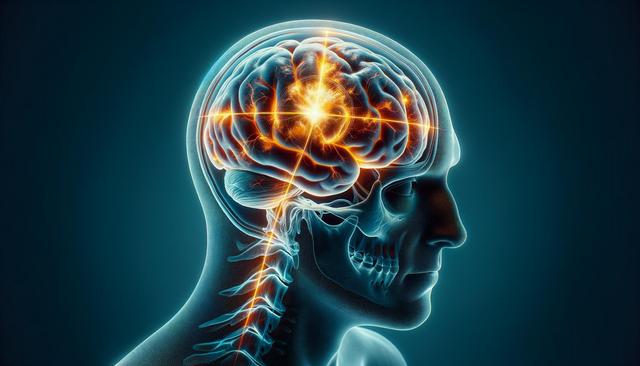What Is a Stroke and How Does It Occur?
A stroke is a medical emergency that happens when the blood flow to part of the brain is reduced or completely blocked. Without a steady supply of oxygen-rich blood, brain cells begin to die within minutes. There are two main types of strokes: ischemic and hemorrhagic. Ischemic strokes, which are the most common, occur when a blood clot blocks a vessel leading to the brain. Hemorrhagic strokes, on the other hand, happen when a blood vessel in the brain bursts, causing bleeding in or around the brain tissue. Both types are dangerous and require immediate medical attention.
The brain relies on a constant flow of blood to function properly. When this flow is disrupted, it can result in the loss of important functions controlled by the affected brain area, such as speech, movement, and memory. Some strokes are preceded by warning signs like transient ischemic attacks (TIAs), also known as mini-strokes, which serve as critical red flags for future, more serious strokes.
Recognizing the Signs and Symptoms
Recognizing the symptoms of a stroke early can significantly affect the outcome. Prompt treatment can minimize brain damage and improve chances of recovery. Common signs include:
- Sudden numbness or weakness in the face, arm, or leg, especially on one side of the body
- Confusion, trouble speaking, or difficulty understanding speech
- Vision problems in one or both eyes
- Loss of balance or coordination
- Severe headache with no known cause
One of the easiest ways to remember stroke symptoms is the acronym FAST:
- F: Drooping on one side of the face
- A: Inability to raise one arm
- S: Slurred or strange speech
- T: Time to call emergency services immediately
Quick recognition and response are crucial. Delays in treatment can lead to more severe brain damage and long-term complications.
Immediate Medical Response and Treatment
Once a stroke is suspected, emergency medical services should be contacted immediately. Upon hospital arrival, doctors quickly assess the type of stroke using imaging techniques like CT or MRI scans. This distinction is vital because treatment for ischemic and hemorrhagic strokes differs significantly. For ischemic strokes, clot-busting drugs may be administered to restore blood flow. In some cases, a procedure called mechanical thrombectomy is used to remove the clot directly from the artery.
For hemorrhagic strokes, treatment often focuses on controlling the bleeding and reducing pressure in the brain. This might involve surgery or other medical interventions. Supportive care, such as managing blood pressure and ensuring proper oxygen levels, is also vital during the initial treatment phase.
Speed is essential. The sooner the blood flow is restored or the bleeding is controlled, the lower the risk of permanent damage. Hospitals with specialized stroke units are equipped to provide comprehensive care aimed at improving survival and recovery outcomes.
Long-Term Effects and Rehabilitation
The effects of a stroke can vary widely depending on the severity and the part of the brain impacted. Some individuals recover completely, while others may experience lasting disabilities. Common long-term effects include:
- Muscle weakness or paralysis, often on one side of the body
- Speech and language difficulties
- Cognitive impairments, such as memory loss and difficulty concentrating
- Emotional changes, including depression and anxiety
Rehabilitation typically begins shortly after the stroke, often within days. A multidisciplinary team may include physical therapists, occupational therapists, speech-language pathologists, and psychologists. The goal is to help individuals regain as much independence as possible and improve their quality of life.
Consistency and patience are key during recovery. Progress can be slow, and setbacks may occur, but ongoing support and therapy play a critical role in maximizing recovery potential.
Prevention and Lifestyle Adjustments
While some risk factors for stroke, such as age and family history, cannot be changed, many others can be managed through lifestyle adjustments. Preventive strategies include:
- Maintaining a healthy blood pressure level
- Managing diabetes and cholesterol
- Quitting smoking and limiting alcohol intake
- Staying physically active and maintaining a healthy weight
- Eating a diet rich in fruits, vegetables, and whole grains
Regular checkups with a healthcare provider are important for monitoring risk factors. Medications to control blood pressure or prevent blood clots may also be prescribed as part of a preventive care plan. Education and awareness about stroke symptoms and risks can empower individuals to make informed decisions about their health and wellbeing.
Support groups and community resources can also provide valuable assistance for stroke survivors and their families, helping them navigate the challenges of recovery and long-term care.
Conclusion: The Importance of Awareness and Action
Understanding what happens during a stroke and how to respond can make a significant difference in outcomes. Early recognition, rapid medical intervention, and continued rehabilitation are vital to recovery. Moreover, adopting a healthy lifestyle and managing risk factors play a crucial role in prevention. Whether you’re seeking to reduce your own risk or support a loved one, staying informed and proactive can lead to better health and potentially save a life.




Leave a Reply